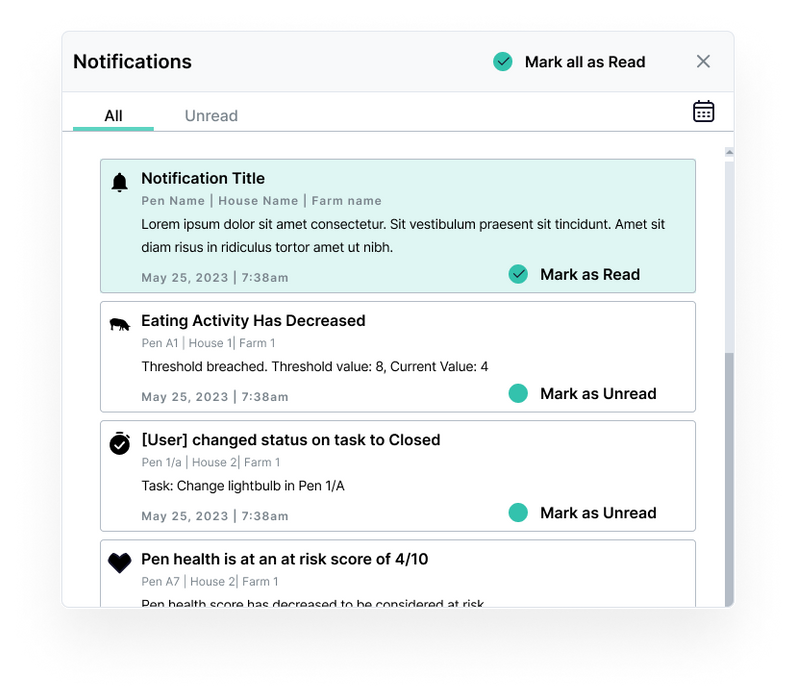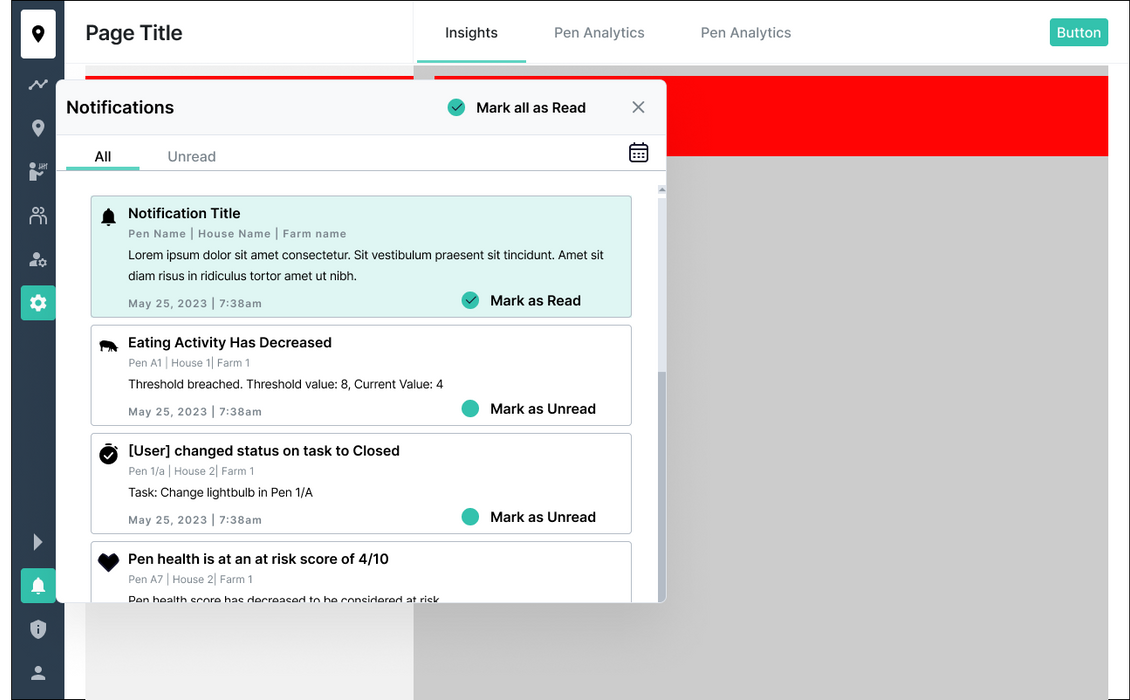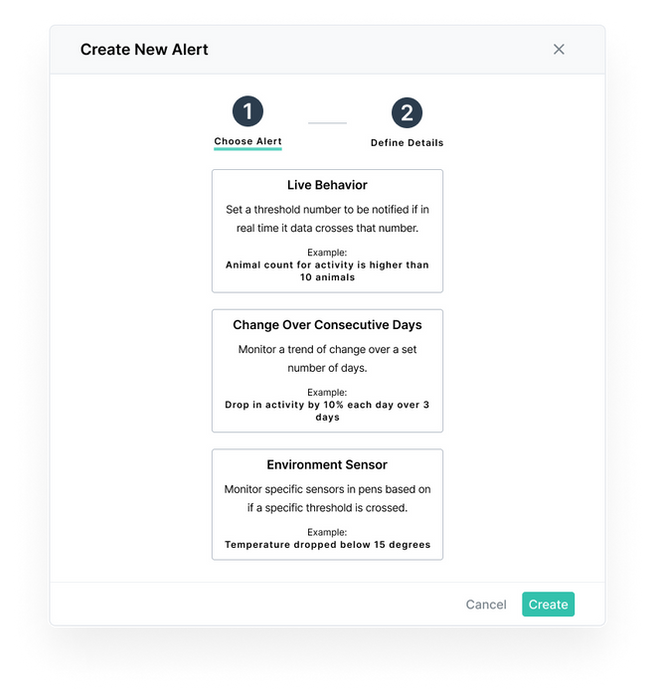
AI Camera Vision Platform for Real-Time Data Analysis
Role: Lead UX/UI Designer & Product Designer
Platform: Desktop (Web Application)
Timeline: 6–12 months
Team: 5–7 team members (Product Owner, Developers, Data Scientists, QA)
Tools: Figma, Miro, Slack, JIRA
Overview
This AI-powered camera vision SaaS platform enables users to remotely monitor and analyze visual data in real time through a machine learning-driven interface. Built for professionals in research-heavy industries, the platform supports advanced image detection, labeling, and data insight delivery via a streamlined, responsive web dashboard. Core use cases included tracking behavior patterns, identifying anomalies, and surfacing actionable intelligence through AI-driven visual recognition.
As the UX and Product Designer, I led the full product and design lifecycle—from discovery through delivery and iteration. I collaborated with stakeholders to define the product vision, map user workflows, and prioritize features based on user needs, technical constraints, and business impact. My process included competitive audits, user interviews, and workshops to align cross-functional teams on product direction and scope.
I created user personas, journey maps, and detailed UX flows to guide feature development and decision-making. I produced low- to high-fidelity prototypes and developed a responsive Figma design system to ensure consistency and scalability. For each feature, I documented interaction logic, user states, edge cases, and functionality requirements—delivering clear specifications and annotated UI designs to support efficient handoff to developers. I partnered closely with engineering and data science teams to review implementation, resolve ambiguities, and iterate on solutions, ensuring both usability and feasibility in production.
About the Client – Serket Technologies
This project was completed in collaboration with Serket Technologies, an agri-tech company focused on transforming livestock farming through artificial intelligence. Serket develops cutting-edge computer vision systems that help farmers monitor animal health, behavior, and welfare in real time—reducing antibiotic use, improving productivity, and creating more sustainable food systems.
As part of Serket’s core product team, I led the UX and UI efforts for their desktop AI camera monitoring platform. The platform allows users to observe livestock remotely, receive health alerts, and leverage behavioral analytics, all through a responsive, data-rich web dashboard. This SaaS solution is a major pillar in Serket’s mission to digitize livestock farming and empower better decisions on the farm through AI-driven insights.
By working directly with the product owner, developers, and machine learning engineers, I helped bring Serket’s vision to life—translating complex technology into a human-centered, intuitive interface for users in agriculture and animal health.
My Contributions
-
Research & Discovery
Led stakeholder interviews and collaborated with subject matter experts to uncover product goals, user roles, and AI model limitations. Conducted competitor and market analysis to inform positioning. Defined core user groups and their workflows, translating findings into personas and initial problem statements that informed early product scoping and MVP definition.
-
Product Definition & UX Strategy
Partnered with stakeholders to map product requirements, prioritize high-value features, and define user success metrics. Designed end-to-end user journeys from onboarding through data analysis, using flow diagrams, task models, and user maps to identify friction points and guide feature roadmap planning.
-
Information Architecture & Design System Creation
Established the app’s foundational information architecture, aligning complex AI outputs into clear navigational hierarchies and visual patterns. Designed and maintained a custom, scalable design system in Figma—including atomic components, layout grids, interaction states, and documentation—to support long-term product growth and developer consistency.
-
UI Design & Prototyping
Created wireframes, mid- and high-fidelity mockups, and interactive prototypes to explore and validate UX patterns. Emphasized data legibility, accessibility, and visual hierarchy across responsive breakpoints. Iteratively tested UI designs with stakeholders to ensure alignment with both user expectations and system capabilities.
-
Developer Collaboration & Handoff
Collaborated closely with engineering teams to translate design concepts into technical deliverables. Delivered well-organized, annotated Figma files and functional specs, documenting component behavior, edge cases, and expected AI states. Supported implementation through weekly standups, async Loom walkthroughs, QA design reviews, and real-time feedback cycles.

Photo Gallery
UX Challenges & Pain Points
Designing a platform at the intersection of AI and agriculture required more than interface design—it demanded strategic thinking to solve systemic user adoption issues in a traditionally analog space. My role extended beyond usability to defining how the product delivered value across a fragmented user base, aligning business needs with user behavior, and building long-term trust in an emerging digital tool.
A Broad Range of Users with Varying Tech Comfort
The platform had to serve both field-based users with little digital experience and tech-savvy analysts working in control centers. I defined core user segments and mapped their workflows to uncover gaps in adoption risk. From there, I designed inclusive UX flows with tailored entry points and prioritized pathways based on frequency and importance. I created focused UI patterns that minimized cognitive load, stripped away jargon, and preserved clarity across all levels of digital fluency—ensuring feature accessibility without diluting product depth.
Low Trust in "Smart Tech"
A significant barrier to adoption was user skepticism toward automation and AI. I reframed the design problem to emphasize control, not automation. By developing user-centric success metrics, I guided the team toward designs that felt supportive, not prescriptive. I implemented progressive disclosure, plain language, and transparent system feedback. Strategic design patterns—such as undo actions, confirmations, and contextual guidance—reinforced user autonomy and helped position the product as a partner in decision-making, not a replacement.
High Data Volume, High Risk of Overwhelm
Real-time and historical camera feeds introduced extreme data complexity. I led prioritization sessions with stakeholders and engineering to align on what insights mattered most to each user segment. Using a mix of dashboard hierarchy, progressive disclosure, and collapsible modules, I structured the interface to surface only the most relevant data at any moment—balancing power-user control with intuitive default views. This approach minimized cognitive friction and supported confident, timely decision-making.
Rebuilding Trust Through Design
Inconsistencies across the platform eroded user confidence. I proposed a scalable design system as a product foundation—not just a visual improvement. I identified the most critical UI components for redesign, then created a modular system in Figma that could evolve with the product. This work not only brought visual cohesion but also reduced engineering ambiguity, cut dev time on new features, and improved stakeholder alignment. As a result, we delivered a more unified experience that users could learn, trust, and rely on long-term.

Outcomes & Impact
My work on the AI Camera Vision Platform focused on revitalizing an existing product—bringing consistency, usability, and scalability to both the user experience and the underlying design infrastructure. By modernizing the interface and introducing a flexible design system, I helped position the platform for long-term success and greater user adoption.
-
Revitalized Outdated UX: Updated legacy features with modern, accessible, and user-friendly designs, reducing friction and aligning the platform with current UI/UX standards.
-
Design System Overhaul: Rebuilt and documented a scalable design system tailored to the product’s needs, improving consistency, accelerating dev handoff, and enabling smoother rollout of future features.
-
Increased User Confidence Across Skill Levels: Designed intuitive flows and simplified complex data interactions to support both novice and expert users, resulting in fewer reported usability issues and quicker onboarding.
-
Feature Expansion with User-Centered Design: Introduced new platform features based on user and stakeholder feedback—prioritizing clarity, flexibility, and task efficiency for different user roles.
-
Improved Developer Collaboration: Delivered clean, component-driven Figma files with clear documentation, reducing back-and-forth during implementation and strengthening design-dev collaboration.



Reflections
This project pushed the boundaries of designing for AI-driven platforms. Balancing cutting-edge tech with user-friendly design required constant iteration, close communication with developers, and a deep understanding of the end user’s mental model. The custom design system I created became the visual backbone of the product, enabling faster scaling and smoother dev handoff.



















